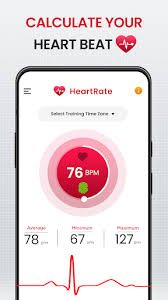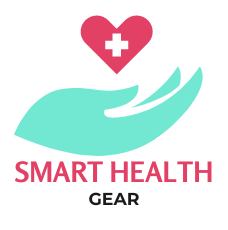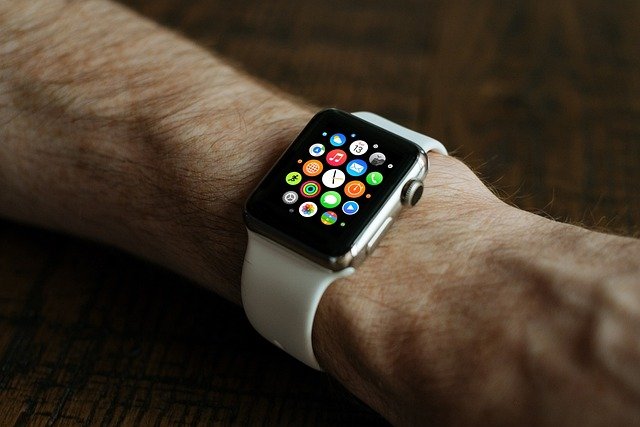Monitoring Heart Health: The Evolution and Impact of Heart Rate Tracking Apps
Introduction
Heart health is a critical component of overall well-being, affecting both longevity and quality of life. In recent years, heart rate tracking apps have emerged as essential tools for monitoring cardiovascular health. These apps, often integrated with wearable devices, provide real-time data and insights into heart rate patterns, offering a convenient and effective way to keep tabs on one’s heart health. This article explores the various aspects of heart rate tracking apps, their benefits, technological foundations, and their impact on personal health.
The Importance of Heart Rate Monitoring
Heart rate is a key indicator of cardiovascular health, reflecting the functioning of the heart and circulatory system. Monitoring heart rate can provide valuable information about:
- Resting Heart Rate: The number of heartbeats per minute while at rest. A lower resting heart rate generally indicates better cardiovascular fitness.
- Heart Rate Variability (HRV): The variation in time between heartbeats. Higher HRV is associated with better cardiovascular and autonomic nervous system function.
- Exercise Heart Rate: Monitoring heart rate during exercise helps in optimizing workout intensity for maximum benefit.
- Recovery Heart Rate: The speed at which the heart rate returns to resting levels post-exercise. Faster recovery indicates better cardiovascular fitness.
- Detection of Irregularities: Tracking heart rate can help in early detection of arrhythmias and other heart-related conditions.
The Evolution of Heart Rate Tracking Apps
Heart rate tracking apps have come a long way from their initial forms. Early heart rate monitors were basic devices used primarily by athletes. With advances in technology, heart rate tracking has become more accessible to the general population. Modern heart rate tracking apps, combined with wearable technology like smartwatches and fitness bands, offer sophisticated features for continuous and comprehensive heart monitoring.
The evolution has been driven by technological advancements such as improved sensors, data analytics, and the integration of artificial intelligence (AI). These innovations have made heart rate monitoring more accurate, user-friendly, and informative.
Key Features of Heart Rate Tracking Apps
- Continuous Monitoring: Modern apps offer continuous heart rate monitoring, providing real-time data throughout the day and night.
- Heart Rate Zones: These apps help users understand their heart rate zones (e.g., resting, fat-burning, cardio, peak) during different activities, optimizing workout effectiveness.
- Heart Rate Alerts: Users receive alerts for unusually high or low heart rates, which can indicate potential health issues.
- HRV Analysis: Heart rate variability is analyzed to provide insights into stress levels, recovery, and overall cardiovascular health.
- Exercise Tracking: Heart rate data is integrated with exercise metrics to give a comprehensive view of workout intensity and effectiveness.
- Sleep Monitoring: Many apps include sleep tracking features that use heart rate data to analyze sleep quality and stages.
- Personalized Insights: Based on collected data, these apps offer personalized recommendations to improve heart health and overall fitness.
- Data Integration: Heart rate tracking apps often integrate with other health and fitness apps, providing a holistic view of the user’s health.
Benefits of Heart Rate Tracking Apps
- Improved Fitness: By monitoring heart rate during exercise, users can optimize workout intensity, improving cardiovascular fitness and overall health.
- Early Detection of Health Issues: Continuous monitoring can help in the early detection of heart-related conditions such as arrhythmias, providing the opportunity for timely medical intervention.
- Enhanced Stress Management: HRV analysis offers insights into stress levels, helping users manage stress more effectively through relaxation techniques and lifestyle changes.
- Better Sleep Quality: Understanding how heart rate changes during sleep can lead to improved sleep habits and better overall health.
- Informed Decision Making: Access to real-time heart rate data empowers users to make informed decisions about their lifestyle, exercise routines, and overall health.
- Convenience: Heart rate tracking apps provide a convenient and non-invasive way to monitor heart health, eliminating the need for frequent medical check-ups solely for heart rate monitoring.
Technology Behind Heart Rate Tracking Apps
The effectiveness of heart rate tracking apps is underpinned by several technological advancements:
- Wearable Devices and Sensors: Wearables such as smartwatches and fitness bands use optical sensors (PPG – photoplethysmography) to measure blood flow changes in the skin, providing accurate heart rate data.
- Data Analytics and AI: Advanced data analytics and AI algorithms process the vast amounts of data collected, providing meaningful insights and personalized recommendations.
- Machine Learning: Machine learning models enhance the accuracy of heart rate detection and analysis by learning from user data and improving over time.
- Cloud Computing: Cloud infrastructure supports the storage and processing of large datasets, ensuring seamless data synchronization and access across multiple devices.
- User Interface (UI) and User Experience (UX) Design: Intuitive design and user-friendly interfaces enhance user engagement and make it easier for users to interpret their heart rate data.

Impact on Personal Health
Heart rate tracking apps have a significant impact on personal health, driving positive changes in lifestyle and health management:
- Proactive Health Management: Continuous heart rate monitoring encourages users to be more proactive about their health, leading to early detection of potential issues and timely medical intervention.
- Enhanced Physical Fitness: By optimizing workout intensity based on heart rate data, users can improve their cardiovascular fitness and achieve better health outcomes.
- Stress Reduction: Insights into HRV and stress levels enable users to adopt stress-reducing practices, improving mental and emotional well-being.
- Improved Sleep: Sleep monitoring features help users understand and improve their sleep patterns, leading to better overall health.
- Behavioral Changes: Regular monitoring and feedback encourage users to adopt healthier habits, such as regular exercise, balanced diet, and adequate sleep.
Challenges and Considerations
Despite their benefits, heart rate tracking apps also present certain challenges and considerations:
- Data Privacy and Security: The collection and storage of sensitive health data raise concerns about privacy and security. Developers must implement robust security measures to protect user data and ensure compliance with privacy regulations.
- Accuracy of Data: The accuracy of heart rate data can vary depending on the quality of sensors and algorithms used. Inaccurate data can lead to misleading conclusions and ineffective health strategies.
- User Engagement and Retention: Maintaining user engagement and retention is a challenge for heart rate tracking apps. Users may lose interest over time or find the app difficult to use. Continuous updates, new features, and personalized content can help in retaining users.
- Health Literacy: Not all users may have the necessary health literacy to interpret and act on the data provided by heart rate tracking apps. Providing educational resources and user-friendly explanations can help in bridging this gap.
- Dependency on Technology: Over-reliance on heart rate tracking apps can lead to a dependency on technology for health management. Users should balance the use of technology with traditional methods of health monitoring and self-awareness.
The Future of Heart Rate Tracking Apps
The future of heart rate tracking apps is bright, with continuous advancements in technology and growing awareness of cardiovascular health. Some trends likely to shape the future include:
- Integration with Healthcare Systems: Heart rate tracking apps may become an integral part of healthcare systems, enabling seamless sharing of health data between users and healthcare providers. This can lead to more personalized and effective medical care.
- Advanced Biometrics: The development of more advanced biometric sensors will enable the tracking of additional health metrics, providing deeper insights into cardiovascular health.
- AI and Predictive Analytics: AI and predictive analytics will play a larger role in heart rate tracking apps, offering more accurate and personalized recommendations. These technologies can also help in identifying potential health issues before they become serious.
- Holistic Health Management: Future heart rate tracking apps may offer a more holistic approach to health management, integrating physical, mental, and emotional well-being. Features like stress management techniques, mindfulness exercises, and mental health tracking can provide a comprehensive health management solution.
- Wearable Technology Advancements: Improvements in wearable technology will enhance the accuracy and functionality of heart rate tracking apps, making them even more effective and user-friendly.
Conclusion
Heart rate tracking apps have revolutionized the way we approach cardiovascular health and overall well-being. By leveraging advanced technology, these apps provide users with the tools and insights needed to monitor and improve their heart health. While challenges remain, the potential benefits far outweigh the drawbacks, making heart rate tracking apps an invaluable asset in the pursuit of better health. As technology continues to evolve, these apps will become even more sophisticated, offering new possibilities for improving cardiovascular health and overall well-being.




